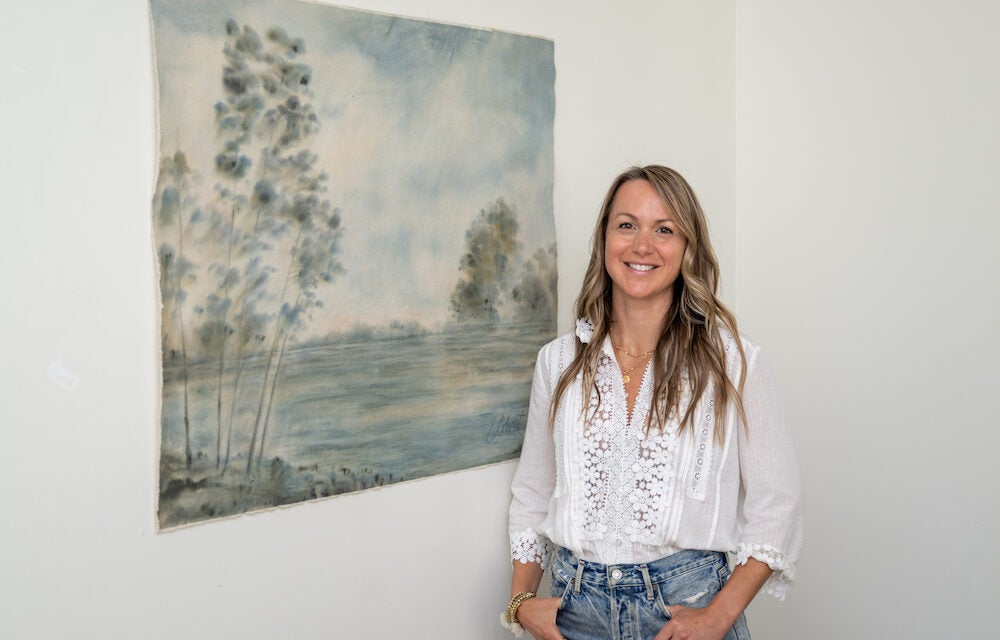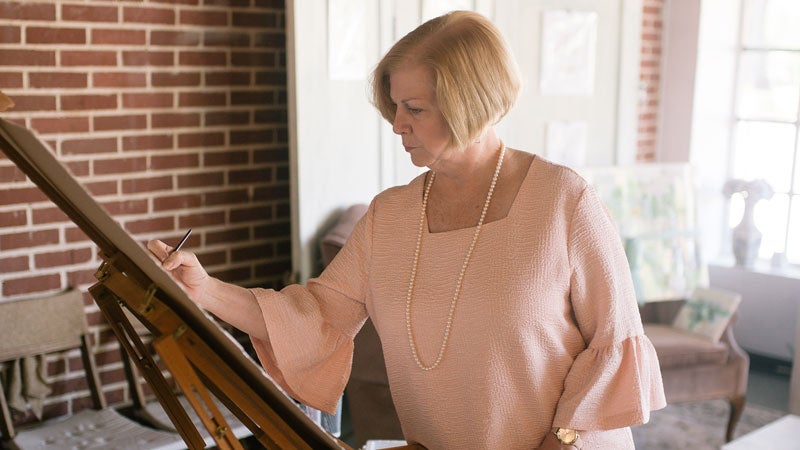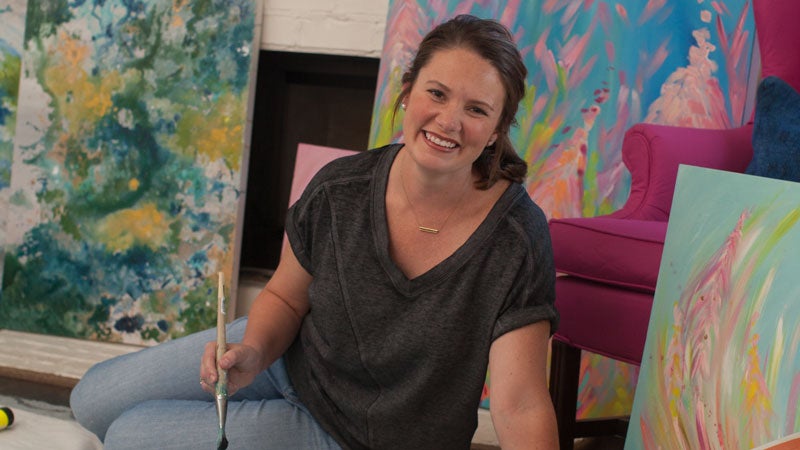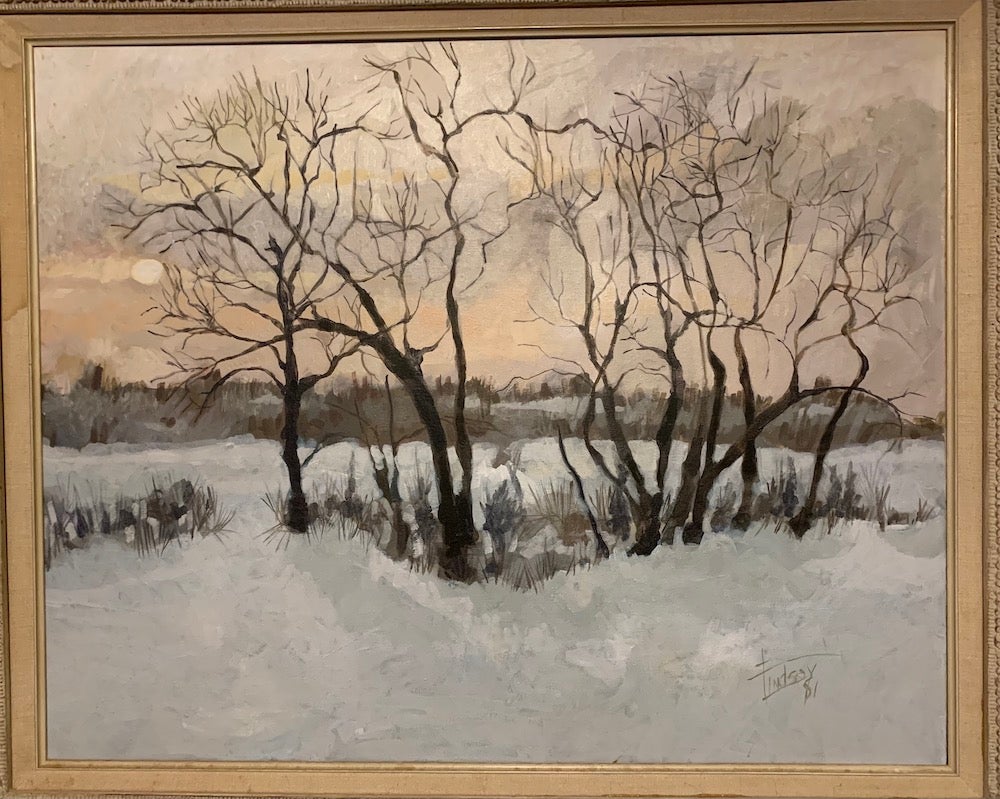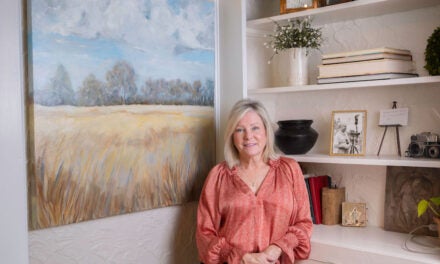By Anna Grace Moore
Photos by Blair Ramsey
The birth of the impressionism movement in the 19th century engineered the way artists painted depictions of light and energy in fluid motion—a style often credited in with gaining popularity by French painter Claude Monet. Impressionistic art is a unique, historical phenomenon in that it is free from the confines of what is acceptable to create and how to paint into fruition the ideas of the human psyche.
Impressionistic art to some can be a form of healing–symbolic of humanity’s free will to express feelings rather than reality; faith more so than reason; hunger over expectation. For Homewood-based artist Christen Colvert, her art is representative of her connection to the Lord and what He conveys through her as a vessel for good will towards others.
Christen’s adolescence can be summed up through her yearning to create–to express herself through the talents she has cultivated over the years. She began drawing and painting as a child with this influence carrying over into her college years.

Christen graduated with a BFA with a concentration in graphic design from Auburn University–the place she credits with meeting the love of her life. After hurdling over the marriage milestone and diving head-first into a career as a graphic designer, Christen joined the team at Southern Progress for several years before starting her family.
During these early years, Christen settled down with her husband in Homewood–“the perfect place to raise a family.” They soon welcomed their three boys–now ages 16, 15 and 9 years old.
When the youngest Colvert entered this world, Christen stepped back from her career to focus on being a homemaker, but she soon rediscovered her purpose in life that ignited the catalyst of her “creative yet sustainable” career in graphic design–painting.
When Christen’s oldest sons entered into grade school, her youngest began attending Covenant Presbyterian’s preschool. Divine inspiration, as she would later call it, struck, and Christen inquired about teaching art lessons to children at the preschool during her newfound time.
She was in luck–the preschool said she could start the following school year. Christen taught art for five years at Covenant before deciding to take a leap of faith and focus on her art career.

She says she would work three days a week and paint the other two days, trying to spend at least four-to-five hours a day in her studio–which was then her dining room. Like so many others, Christen’s family’s pace of life slowed dramatically at the onset of the COVID-19 pandemic, so she really focused on painting in the few reprieves life afforded her as a mom of three, all isolating at home.
“When you are an artist, what you make is an extension of you,” Christen says.
Having always had a fondness for creativity in her heart, painting came back naturally to Christen, who says one of her muses is William Turner–a late 18th century “romantic painter.” William, who was known as the “painter of light,” often mixed muted colors to create ethereal, oceanic landscapes and scenes of heavenly inspiration.
This style of painting is therapeutic, Christen says, because impressionism both permits and encourages free thought, and when one harnesses the willpower to create against the grain, she can paint liberty beautifully, inspiring so many others to do the same.
When she started painting again and soon, as often as she could, Christen says she returned to her roots, painting pieces that felt “calming” and “joyful.” She utilized hues of emerald, sage, navy and aegean to transform landscapes into masterpieces.
“I want people to feel something when they look at [my art],” Christen says. “Art is a form of worship for me. It’s where I feel connected to the Lord. Being in nature does the same for me, too. I think that’s why I’m drawn to landscapes because it’s almost like I’m taking myself to that place.”

Interestingly, one of Christen’s favorite mediums is watercolor specifically on “raw canvases” because she enjoys the texture the canvas creates for such thin paint. While watercolor dries quickly, meaning her hand has learned to paint faster than the medium dries, Christen says these stretched fabrics create a relaxed fit for those that admire her art.
Christen credits Holland and Birch in Homewood as being one of her earliest supporters. The owner, who is a high school friend of Christen, invited her to host a pop-up shop at the store, and Christen’s business kicked-off.
“I’ve really been embraced by the Homewood community,” Christen says. “From there, it was exciting to shift things to other states, but Homewood is my biggest supporter.”
Three Sheets and Christopher Collection in Homewood also helped grow Christen’s business, giving her an audience fond of her creative style. Some of her favorite pieces can be found in Christopher Collection currently.
Now, Christen ships her art to customers all across the Southeast, encouraging anyone she can to value the beauty in impressionism. She also challenges art enthusiasts to pause a moment to fathom the healing painting yields for those brave enough to pick up a brush.
Everyone can create art, she says, but not everyone can understand why some art–perhaps bigger than one’s own comprehension–is both beautiful and powerful in its own way.
Luckily, Christen, who started off as a dreamer, then became a student and most recently, a teacher, understands that painting is much more than colors on canvas. Painting is spiritual, she says.

“My purpose in life is to display His glory [through my art] and to tell others about Him,” Christen says of her faith. “I do believe He’s given me a gift of art. I want to use my gift to reflect the glory of what He has made.”
So, how can art be healing, expressive and a form of teaching all in one? Christen says abstract art, first and foremost, is healing because anyone can paint a reflection of her inner feelings, communicating to the world how she feels and why her feelings matter.
Often, painting is a way to express what words simply cannot. Furthermore, art is self-expression and uniquely, not everyone has to understand the language set forth on a canvas; One needs only to look with an unassuming eye to fathom what the artist is trying to convey.
Finally, art is a form of teaching. When Christen began painting for several hours each day, she says she would listen to worship music for inspiration.
“There are so many songs that are anointed,” Christen says. “I want that tangible anointing on my work that when someone looks at it, they sense the presence of the Lord.”
If songs were louder or more rich in melody, Christen says her brush strokes would emulate the beat of the music and vice versa.
More importantly than how she creates art is why she creates art and what her art conveys with the world. Peace, love and joy are what Christen hopes her art makes her customers feel–specifically that the Lord loves everyone and has a purpose for each person’s life–a symbolic purpose Christen tries to paint into every masterpiece.

“I couldn’t do this if people didn’t buy my art, and I don’t take that for granted,” Christen says of her customers’ support. “ I want to glorify the Lord in my work and hope that it brings peace into my customers’ spaces.”
Thus, if Christen can paint love into still waters and hope into tree branches, she says anyone can pick up a brush and create what her heart feels within. Christen says another purpose of hers is to help others find theirs through the therapeutic art of painting, but no matter the medium, the best art, she says, are the pieces divinely inspired to move generations to come.
To view or purchase Christen’s artwork, visit christencolvertart.com.
Impressionism
Impressionism is often characterized with light brushstrokes forming the basis or “impression” of a subject. This style of painting places an emphasis on natural light.

